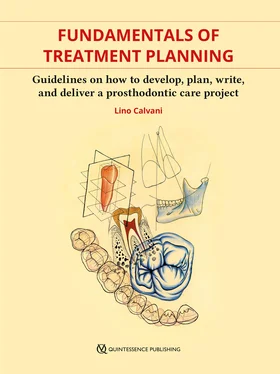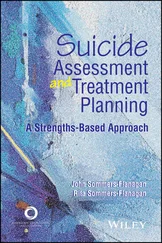1. Bad breath (clinician and patient both smell it).
2. Dry mouth or xerostomia (patient feels it, clinician sees it).
3. Dysphagia (patient feels it, clinician sees it).
4. Bleeding.
5. Inability to speak properly.
6. Speech changes.
7. Loss of ability to chew.
8. Esthetic problems.
9. Tooth mobility.
10. Tooth fracture.
11. Tooth loss.
12. Fever or hyperthermia (measurable).
13. Altered skin color.
14. Skin moisture content.
15. Cancer.
16. Tooth sensitivity.
17. Reaction to pulp tests such as cold, heat, a low dosage of electricity (felt by the patient as a symptom, induced and seen by the clinician as a sign).
Main symptoms and signs in dental medicine
Pain is the main and most important symptom and is usually the patient’s chief complaint. Closely related to pain is discomfort, which is second only to pain in terms of intensity or sensitivity. The two are directly related and should be considered together. Other important symptoms and signs (so-called ‘ringing bells’) that should be taken into account during any patient evaluation are inflammation, xerostomia, dysphagia, fever, and hyperthermia. These main signs and symptoms are indicative of an existing problem and need to be investigated in terms of their severity, duration, and location in order to make a precise diagnosis. They may vary according to changes in the patient’s posture, temperature, or activity (ie, whether the patient is at rest or chewing). 1, 12
Pain
Dental pain may be caused by a wide variety of problems such as acute pulpitis, dental abscesses, fractured teeth, acute pericoronitis, myofascial dysfunctions, etc. It is important to delve a bit deeper into the origin of the pain. The definition of pain in the Glossary of Prosthodontic Terms states: “Pain n (13c): a subjective unpleasant sensory and emotional experience associated with actual or potential tissue damage or described in terms of such damage — see acute pain, chronic pain, heterotopic pain, masticatory pain, musculoskeletal pain, myogenous pain, neurogenous pain, odontogenous pain, primary pain, projected pain, secondary pain, vascular pain, visceral pain.” 13- 15
Pain is a complex phenomenon. It is the natural alert for patients of a possible ongoing problem that the clinician cannot see, as there is no evidence of it apart from the patient’s subjective description. 16- 18As mentioned previously, pain is always relative to the individual patient, as everyone perceives it differently and describes and evaluates it in a unique way. 16, 19, 20
Some patients suffer from clinical conditions where they are unable to perceive pain at all (analgesia). An example of such a condition, hereditary sensory and autonomic neuropathies (HSAN), is a disorder characterized by the malfunctioning or nonfunctioning of pain receptors. 13, 19, 21- 23The classic and most dangerous example of this disorder is type IV HSAN, called HSAN IV. It is also known as congenital insensitivity to pain with anhidrosis (CIPA) or Nishida syndrome. 23, 24, This disorder has two characteristic features: the incapacity to feel pain and temperature, and the decrease in the ability or the inability to sweat (anhydrosis). These inabilities can lead to repeated injuries that may become debilitating such as biting the tongue, lips, cheeks, or fingers. In some extreme cases they can be dangerous, leading to severe wounds and in rare instances to the necessity to amputate the affected area. Other serious conditions such as hypertension and diabetes may cause hypoalgesia; therefore, they need to be investigated and assessed before any oral treatment.
Furthermore, drugs may reduce a patient’s capacity to feel pain by inducing a decreased sensitivity to painful stimuli (hypoalgesia). When medications affecting the sensory system are taken or abused – such as analgesics (eg, carbamazepine) or nonsteroidal anti-inflammatory drugs (NSAIDs) (eg, aspirin, ibuprofen, naproxen, and paracetamol) – they may affect a patient’s ability to sense pain and perceive damage in the oral cavity. 23, 25, 26Opioids, currently widely used not only in the USA but increasingly worldwide, may heavily reduce pain perception. This increases the possibility of patients hurting themselves when chewing, speaking or during certain parafunctions.
We also need to bear in mind that sometimes patients’ pain may be psychologic in nature, ie, the pain may not be actual or real, but rather imagined. This is a complex topic and relates to patients’ present or past negative experiences, expectations, fears, anxieties, and traumas. 19- 21, 27- 31It could be that the patient is describing as pain something that is actually discomfort. 31, 32If reported pain is associated with tissue damage, clinical evidence will prove it. It is important for us to be attentive and sensitive in our clinical examination of patients in order to verify whether pain actually exists and whether it is truly related to damage or disease in the oral cavity. 21, 30, 33
Anxious patients are often more likely to report pain and discomfort for reasons such as their overestimation of danger, conditioning past perceptions and experiences, hypersensitivity to cold and heat, emotional expectations, loss or lack of control, muscle tension or rigidity, cultural and educational attitude, etc. 19, 20, 28When assessing the cause of any pain in a clinical examination, it is advisable to correlate reported pain with the level of anxiety in the patient and to consider possible related psychologic signs and symptoms. In this way, we can better assess whether the pain is due to real damage, dysfunction or disease, and whether it relates to a real sensory experience or is due to emotional trauma or worry. 21
There may be many causes of a patient’s pain (see the definition of pain and its many subsidiary categories in the Glossary of Prosthodontic Terms, on page 37). Each one may have different origins and characteristics such as:
1. Pain location (localized, diffused, and/or migrating).
2. Association with other symptoms or evident signs.
3. Specific characteristics (insurgence, quality, duration, intensity).
4. Existing aggravating factors (function, temperature, head posture, stress, medications).
5. Possible relationship with other concomitant ailments or previous problems.
It is important to be aware of all these clinical possibilities. In general, we should not under- or overestimate the importance of these symptoms as they form the basis of the decisions we make in terms of the diagnosis and treatment plan. 12, 18
Inflammation
Inflammation or phlogosis (from the Greek phlogos meaning ‘flame’ – which refers to the burning sensation that is one symptom of inflammation) is the first natural defense response of any living tissue to an injury. It is the cause of symptoms and signs such as swelling, discomfort, redness, pain, burning, and fever.
Inflammation is not purely a local event but often actively involves the entire body. It is a set of cyclic modifications, called inflammatory process moments, that occur at the vascular-connective tissue level when the body reacts to harmful agents. These agents can be of a differing nature and origin and usually cause a gradual rather than immediate and complete destruction of tissue. 34, 35
Furthermore, inflammation is a pathologic event that needs the vitality of the tissues as well as excellent blood and lymphatic vessel functionality. It also needs the necessary means to convey the defense inflammatory components locally and spread them throughout the entire body. 35,
Inflammation may be caused by a variety of agents such as:
1. Physical: mechanical, thermal, electrical or actinic injuries, foreign bodies, inert materials, etc. 37
2. Chemical: poisons (ingestion or injection), abnormal metabolic products, blood levels, etc. 37
Читать дальше












